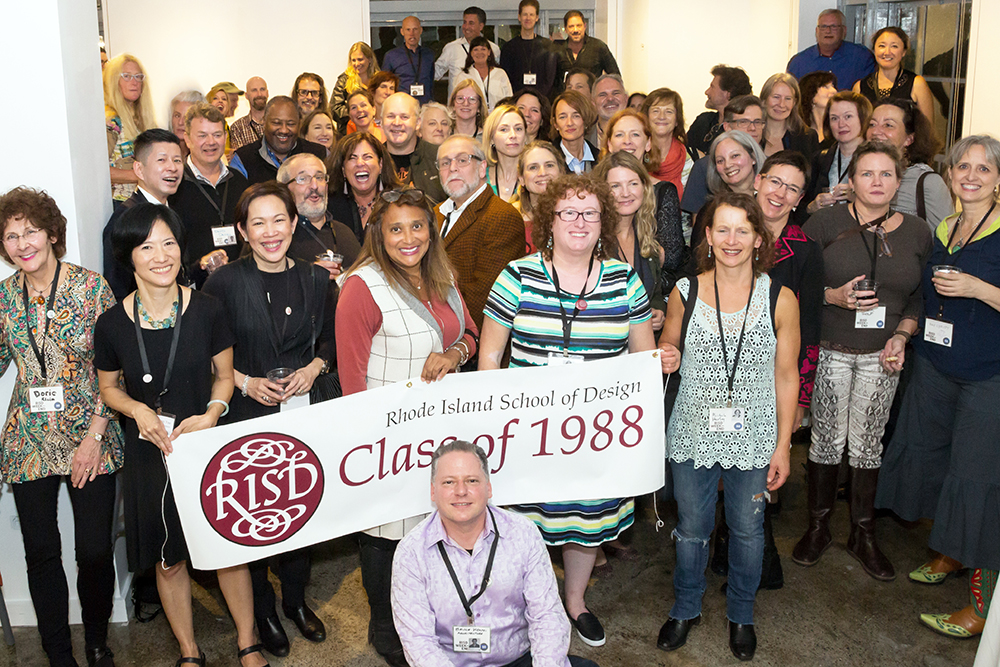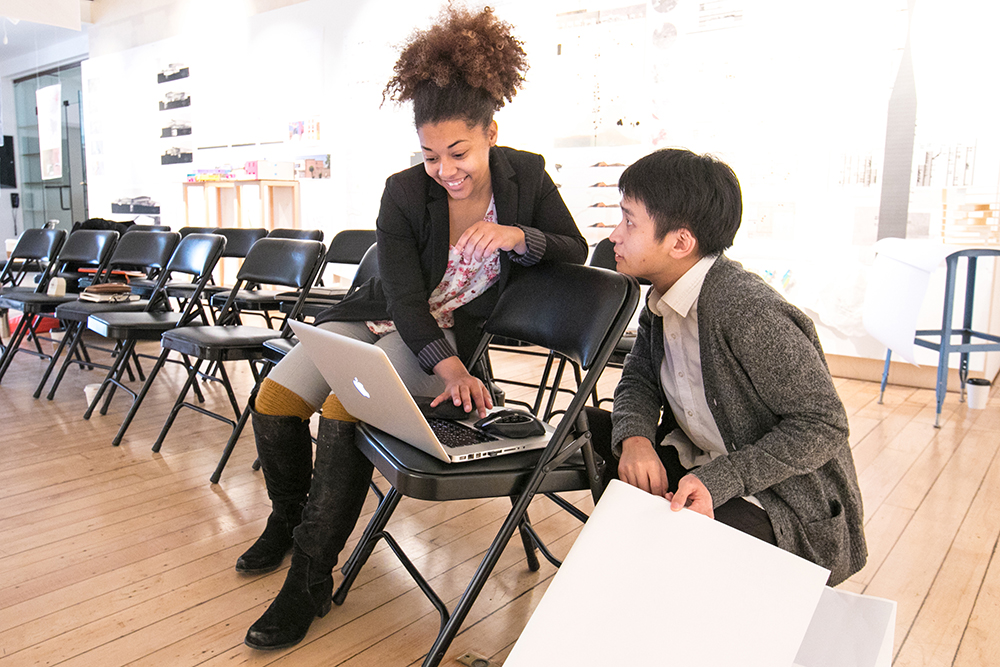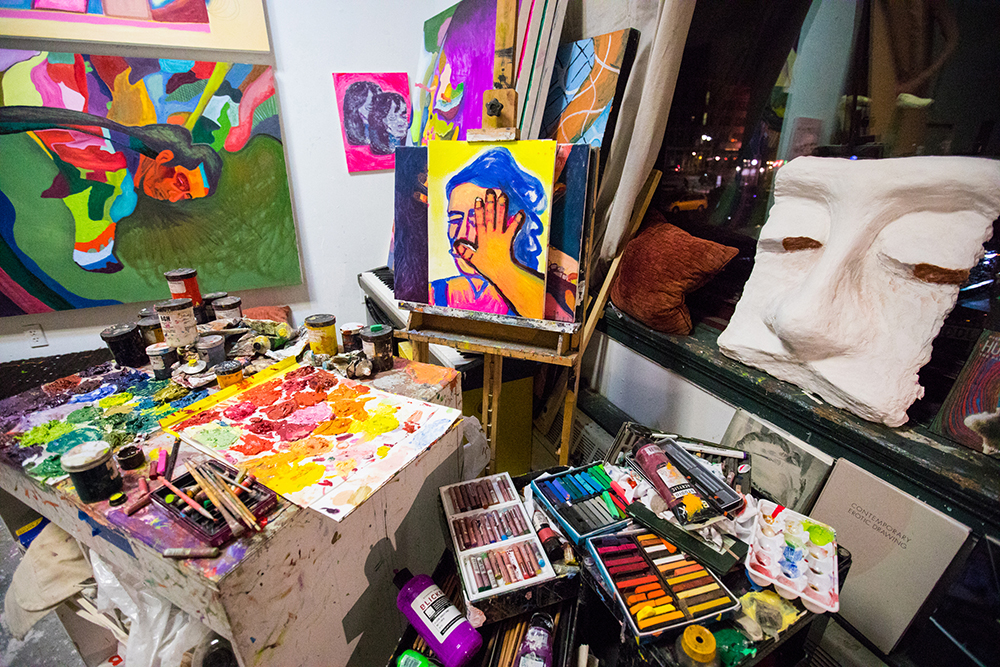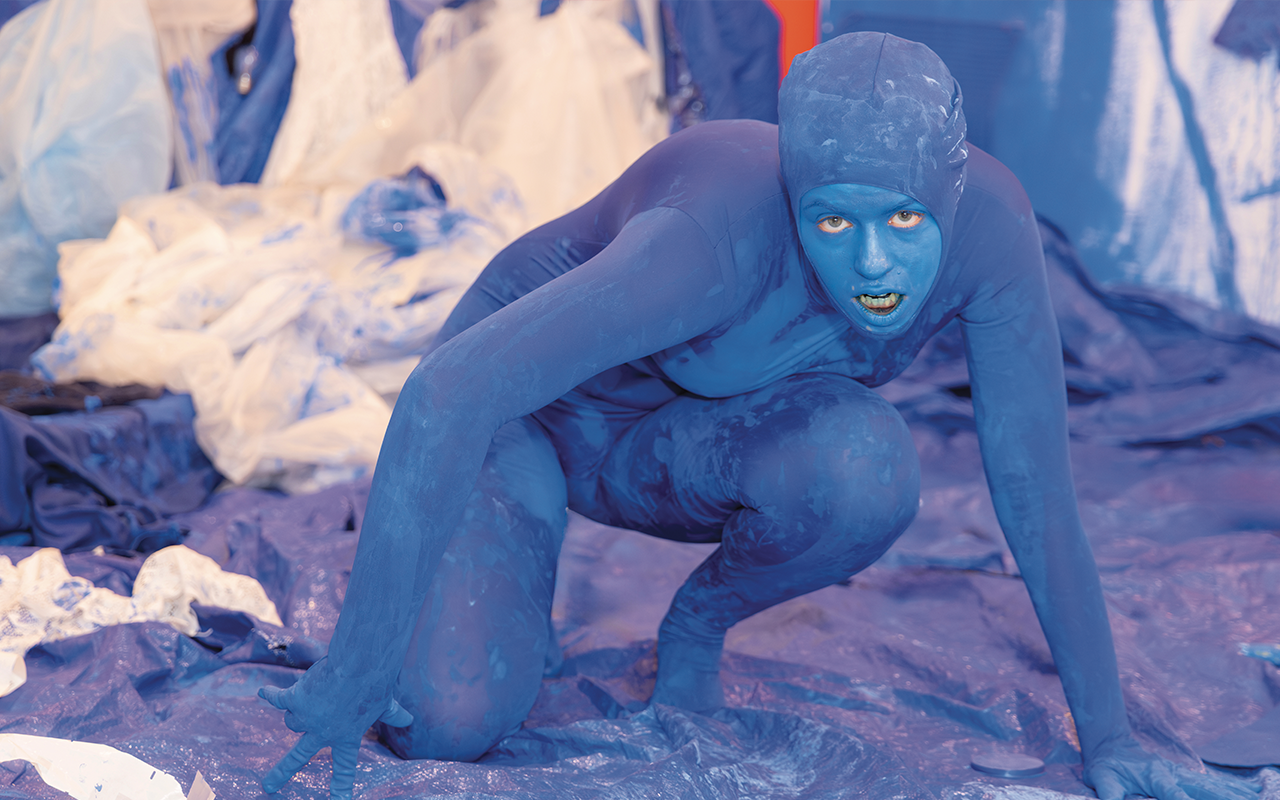
Art, In the Moment
Reading theory and learning from guest critics was part of the journey, but for students in Solo Performance, a first-of-its-kind studio course out of Painting, it all came down to the final performance.
After a semester of workshops and rehearsals, students in the Solo Performance class have a chance to show what they’ve learned. On the first floor of 20 Washington Place, students rearrange tables and chairs to resemble the lobby of a customs office for a performance by Echo (Fengxiao) Xu 25 PT. Across the room, Bec Patsenker 25 SC, dressed head to toe in blue, arranges their set for a performance of SAFETY BLUE, which draws on OSHA’s code of safety colors and probes questions of when it is or is not safe for queer bodies to be in the spotlight. Elsewhere, Ian Kelewae 25 FAV has his cello for a performance that combines storytelling and improvi- sation. With the stage set, all 12 students gather with faculty to go over the final details before the metaphorical curtain rises.
The course, co-taught by video artist and Painting Professor Angela Dufresne and Painting Critic Jarrett Key MFA 20 PT, is funded by the Robert L. Turner Theatrical and Performance Design Fund. Robert L. Turner 74 IL, an interior designer who has worked as an editor at Vogue and Harper’s Bazaar, established the fund in 2014 to support experimental, interdisciplinary courses. Dufresne and Key grounded the course in theory and made sure to include opportunities for students to learn from practitioners. “The most essential things to read in performance class are about gender studies, about sociology, about history, class, racism and subjectivity,” Key says. “So much about being an artist is about how you relate to yourself and how people relate to you. A lot of the readings were set up to give them skills to address their own subjectivity and create a clear frame for performance.”
In addition to readings and class discussions, students got to meet with composer and perfor- mance artist M Lamar, perform for guest critics and interdisciplinary artists Kameron Neal and Felicity Palma and hear a lecture from Rebecca Schneider, a professor of modern culture and media from Brown who, Dufresne says, “blew everyone’s hearts and minds.”
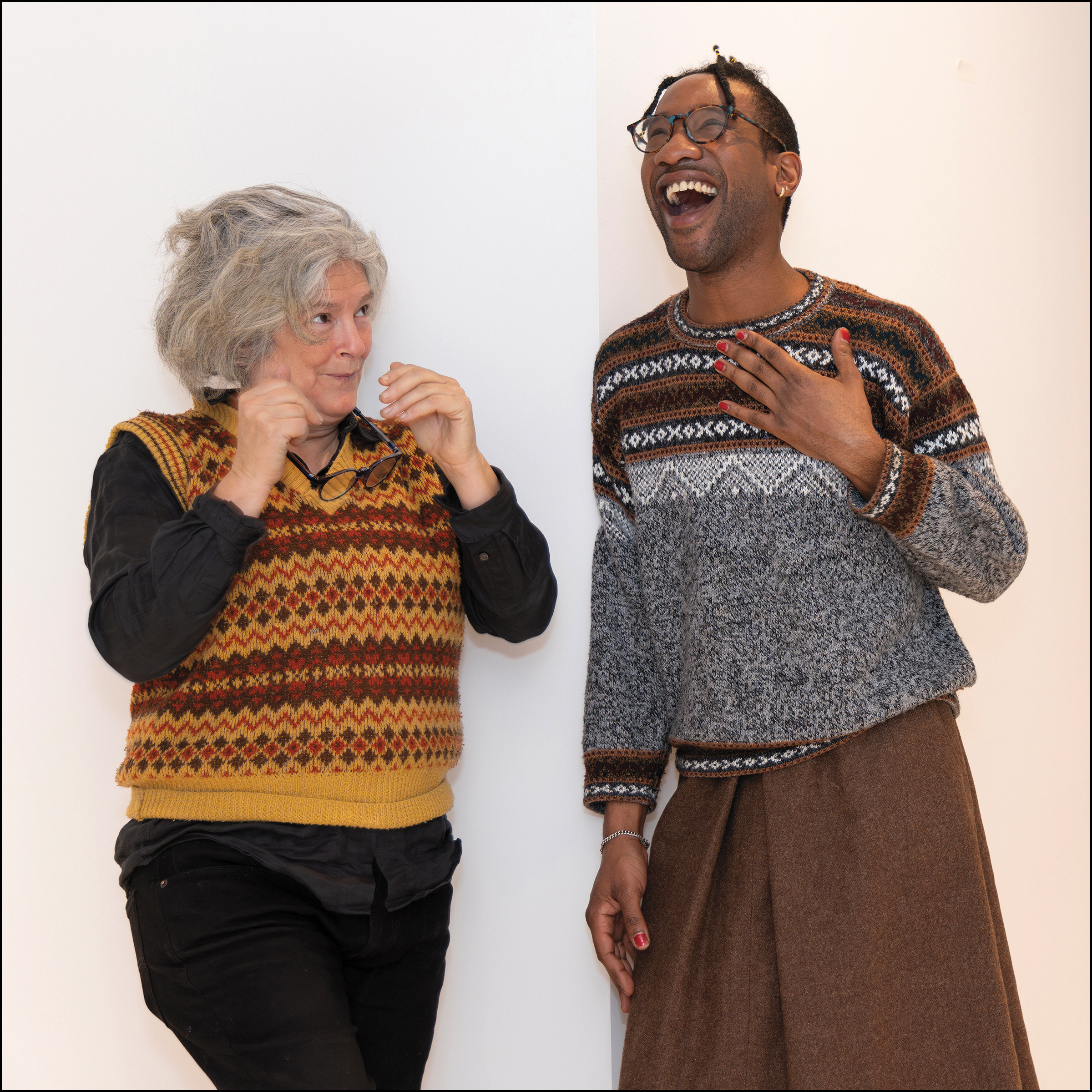
Classes funded with grants from the Turner Fund are required to create opportunities for public engagement. For Solo Performance, one of those opportunities was M Lamar’s visit, which included a lecture and a performance in the Tap Room that was also open to the RISD community. “It was a packed house,” Dufresne says. “So much energy. Things like that can really be transformative.” For many of the students, it was a semester-long process of transformation.
Mayuko Kobayashi 25 FAV says that the class put them outside of their comfort zone. They contrast it with crits in their major, in which it is easier to separate the self and the work. Critiquing an individual performance has the potential to feel more personal and vulnerable.
“But it’s challenging in a good way,” they say. “I’ve been thinking about replicating and inheriting movement or adopting a sense of timing and rhythm from another being. This semester, I’ve been thinking about how my grandmother moves and what it means to embody another presence. It’s been challenging and interesting.”
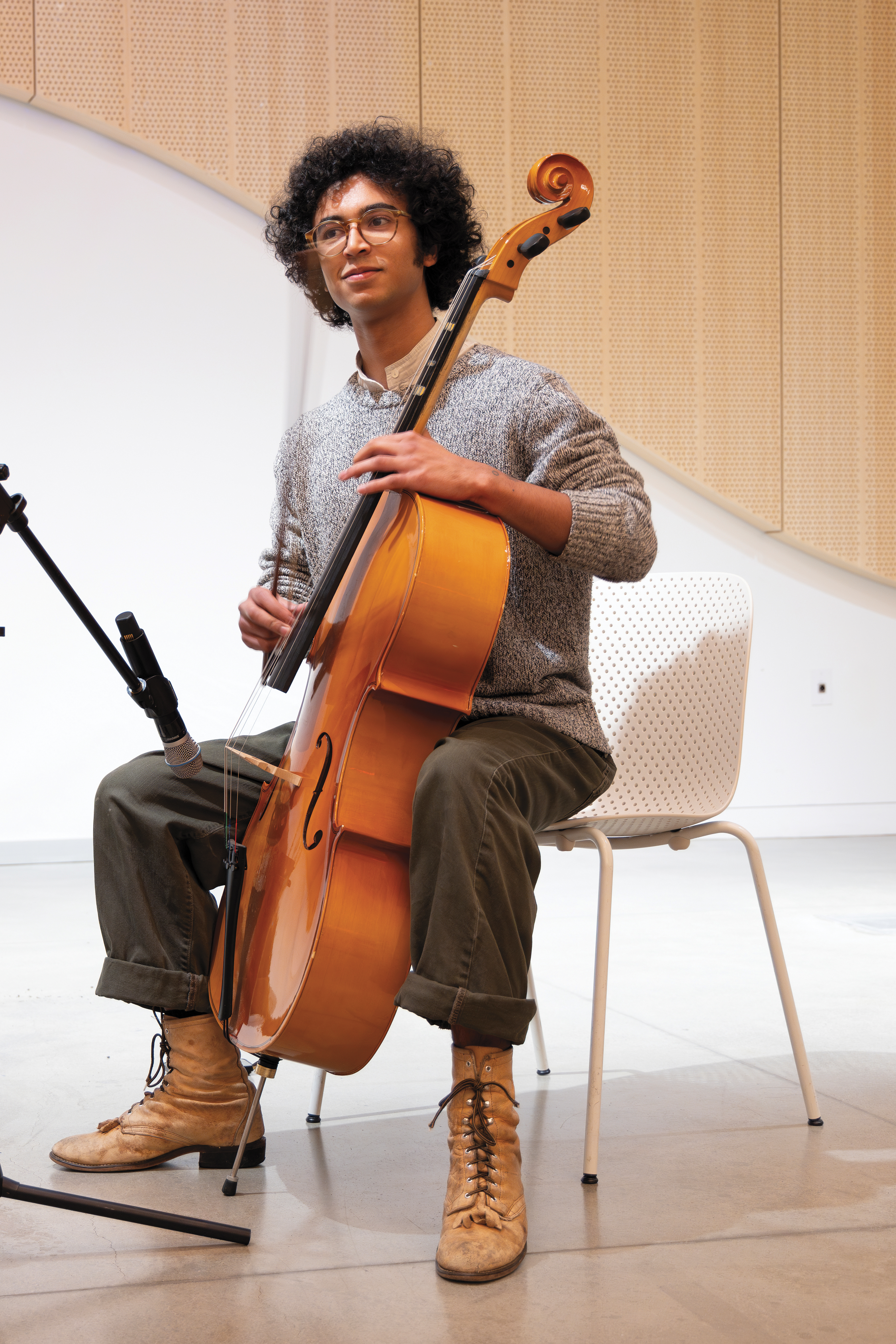
As members of the Providence-based band Banana Pup, Kelewae and Anna Macleod 25 FAV are used to performing. Still, Solo Performance was something new to them.
Kelewae explains, “In a typical RISD class, you do work at home, bring it in and talk about it. But here, the hard work is in class. We do a lot of readings and stuff like that, but the art itself is in the moment. That can be really exciting or really difficult.”
“In FAV, it doesn’t matter how you feel the day of the critique,” Macleod adds. “But in a performance class, you can do all the preparation in the world, but you do have to be incredibly present in the moment. Success rides on that.”
Key and Dufresne hope that the lessons of the class will last beyond the moment and stretch beyond the genre of performance.
“No matter what department you are in, perfor- mance is an essential part of your craft. Performance is inherently supplementary,” Key says. “Having this course, which requires you to think through how you use materials, how you understand yourself in relation to materials, how you can apply your skills from other disciplines–that is really fun and powerful.”
Words by Lauren Rebecca Thacker. Images by Adam Mastoon

